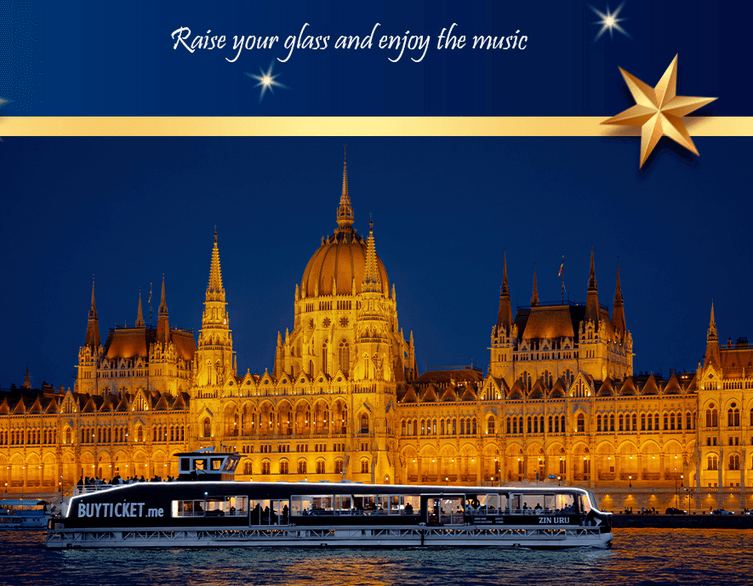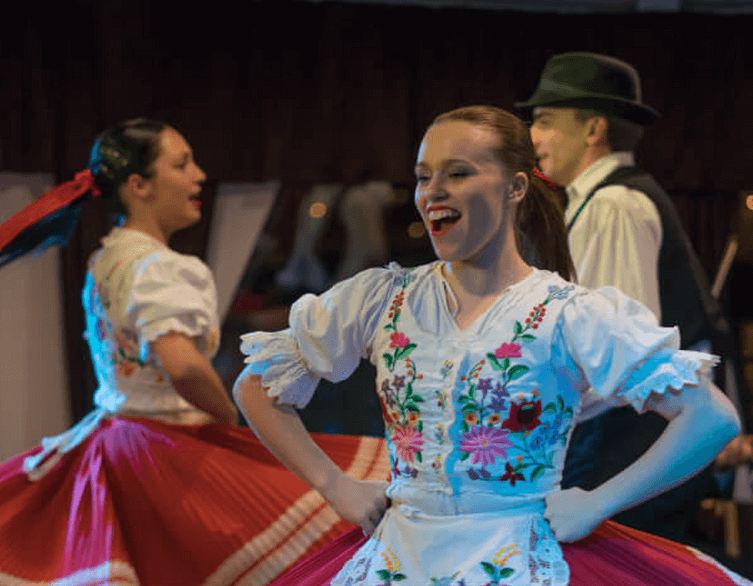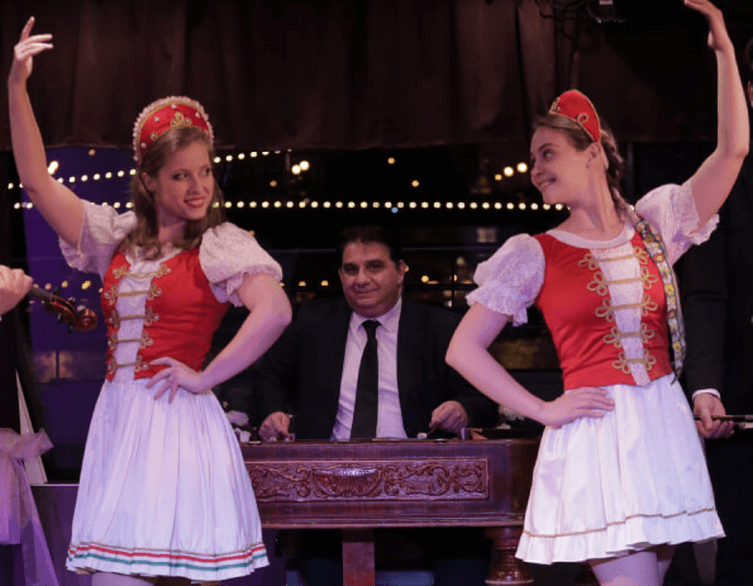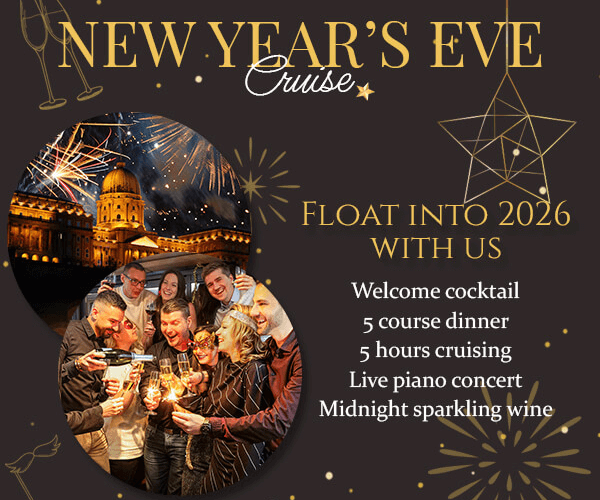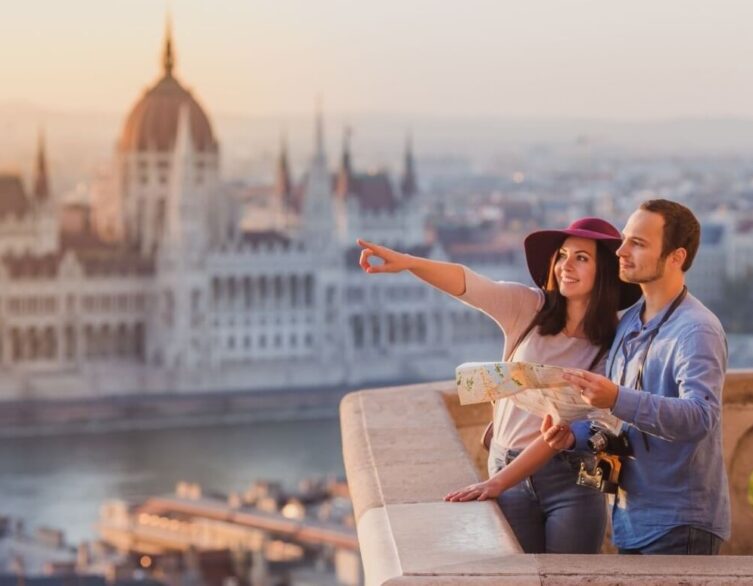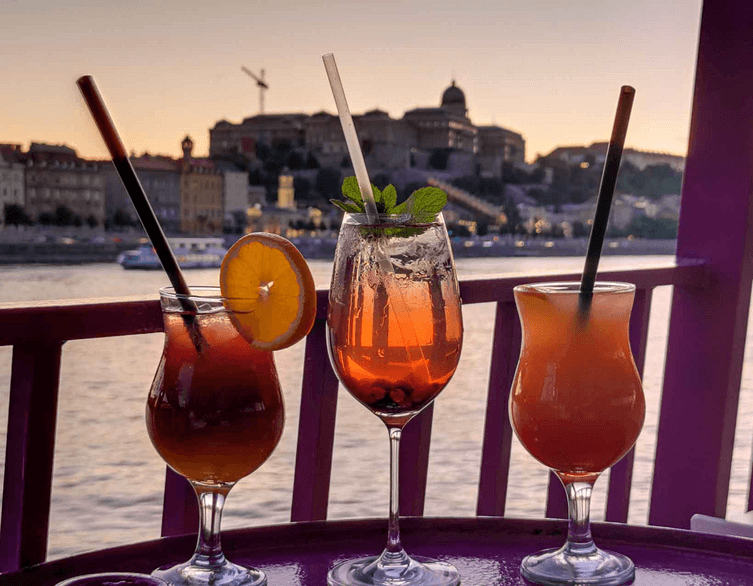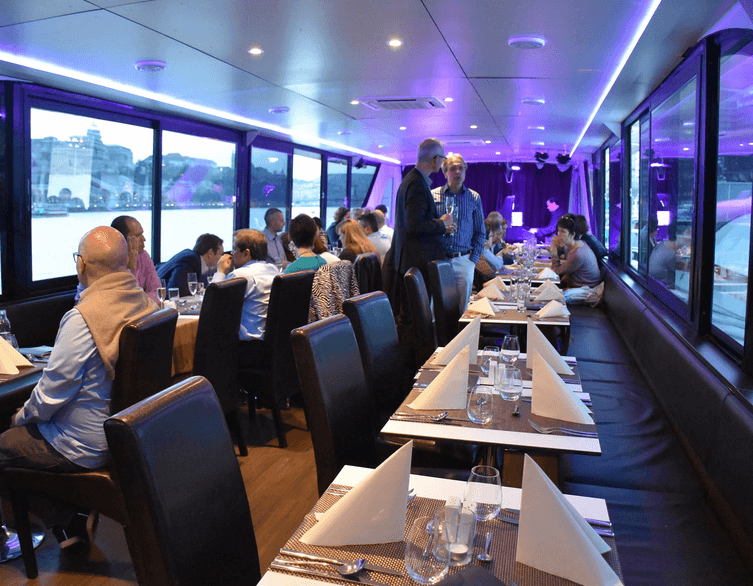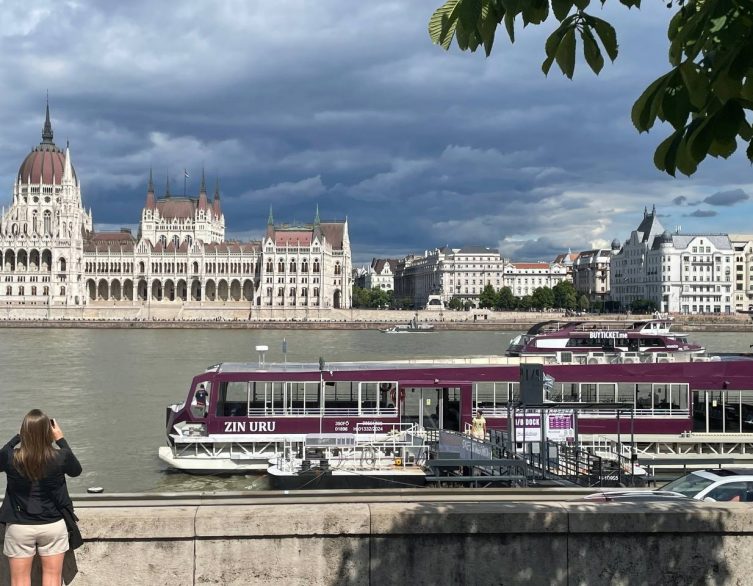A French Beauty Spotted in Budapest: The Orient Express Began Its Luxurious Journey Through 2025

The Orient Express has returned to Budapest, and for travelers seeking the ultimate luxury rail experience, the Hungarian capital offers an extraordinary gateway to one of the world’s most legendary train journeys. This iconic locomotive, steeped in mystery and elegance, continues to capture imaginations just as it did during its golden age in the 1920s and 1930s, when it carried European royalty, international celebrities, and adventurous souls across the continent in unprecedented style and comfort.
The Legend Returns to Budapest’s Nyugati Station
When the Venice Simplon Orient Express glides into Budapest’s historic Nyugati Railway Station, it brings with it over 140 years of railway heritage and an atmosphere that seems to transport passengers directly into an Agatha Christie novel. The sight of this magnificent train, with its distinctive art deco styling and deep blue carriages adorned with golden emblems, creates an unforgettable spectacle against the backdrop of Budapest’s architectural grandeur. The station itself, with its iron and glass construction reminiscent of the great European railway terminals of the 19th century, provides the perfect theatrical setting for this grand entrance.
The Venice Simplon Orient Express, operated by the prestigious Belmond hotel chain under the LVMH Group, represents the modern incarnation of the original Orient Express that first departed Paris for Constantinople in 1883. While the original service ended in 1977, this luxurious revival has been enchanting travelers since 1982, offering an authentic taste of the golden age of rail travel. The train’s restoration represents one of the most ambitious heritage preservation projects in the history of luxury travel, with each carriage meticulously restored to its original splendor using traditional craftsmanship techniques and authentic materials from the period.
The arrival of the Orient Express in Budapest is more than just a transportation event; it’s a cultural phenomenon that draws crowds of onlookers, photographers, and railway enthusiasts who gather to witness this living piece of history. The train’s presence at Nyugati Station creates an almost magical atmosphere, where the boundaries between past and present seem to blur, allowing modern travelers to step directly into the glamorous world of early 20th-century European high society.
Budapest’s Strategic Role in Orient Express History
Budapest has always held a special place in the Orient Express story, serving as far more than just another stop along the route. During the train’s original era, the Hungarian capital functioned as a crucial junction where the route split toward Belgrade and Bucharest, making it one of the most important stops on the entire network. The city’s strategic location at the crossroads of Central and Eastern Europe meant that approximately one-third of the original Orient Express route passed through Hungarian territory, cementing Budapest’s significance in this legendary rail service.
The Hungarian government’s forward-thinking railway policies in the late 19th century played a pivotal role in making the Orient Express possible. Hungary meticulously honored its international commitments to build Balkan railway connections and actively supported the construction of connecting lines in neighboring countries. This diplomatic and infrastructural foresight helped create the seamless rail network that made the Orient Express dream a reality. Hungarian engineers and railway officials worked closely with their counterparts across Europe to ensure that the ambitious vision of connecting Western Europe with the Ottoman Empire could become a practical reality.
The historical significance of Budapest’s role extends beyond mere logistics. The city served as a cultural melting pot where passengers from different European nations would mingle, creating the cosmopolitan atmosphere that became synonymous with Orient Express travel. Hungarian nobility frequently traveled on the train, and the stop in Budapest became known for its elegant station ceremonies and the opportunity for passengers to experience Hungarian hospitality and cuisine.
During the interwar period, Budapest’s importance to the Orient Express network grew even more significant as political changes across Europe affected various routes. The city’s stability and its government’s commitment to maintaining international railway connections made it a reliable anchor point for the service, ensuring continuity even during turbulent times in European history.
The Modern Orient Express Experience in Budapest
Today’s Orient Express offers multiple routes that include Budapest as a key destination, each carefully designed to showcase the best of European luxury travel while honoring the train’s historic legacy. The Venice Simplon Orient Express operates several itineraries throughout the year that bring this magnificent train to the Hungarian capital, with each journey representing a unique opportunity to experience the magic of arriving in Budapest aboard this legendary locomotive.
Travelers can experience the unparalleled magic of arriving in Budapest aboard this legendary locomotive, with the train typically arriving at Nyugati Station where passengers can disembark to explore one of Europe’s most beautiful cities. The arrival process itself is choreographed like a theatrical performance, with uniformed staff members greeting passengers and assisting with luggage while maintaining the impeccable service standards that have made the Orient Express famous worldwide.
The current Orient Express maintains and even exceeds the opulent standards that made the original famous throughout Europe and beyond. The train consists of 17 meticulously restored vintage carriages from the 1920s and 1930s, including sleeping cars, dining cars, and an elegant bar car. Each carriage has been lovingly maintained to preserve the authentic art deco atmosphere that defined the golden age of luxury rail travel, with original marquetry, brass fittings, and hand-embroidered fabrics that represent the pinnacle of 1920s craftsmanship.
The restoration process for each carriage took years to complete, with master craftsmen using traditional techniques to recreate the original interiors. Skilled artisans worked with period-appropriate materials, including rare woods, authentic fabrics, and hand-blown glass, to ensure that every detail matched the original specifications. The result is a train that not only looks authentic but feels authentic, creating an immersive experience that transports passengers back to the golden age of rail travel.
Accommodation Options Aboard the Orient Express
The Venice Simplon Orient Express offers four distinct categories of accommodation, each designed to provide varying levels of luxury and comfort while maintaining the authentic atmosphere of 1920s luxury travel. The accommodation options reflect the social hierarchies of the original Orient Express era while providing modern amenities and comfort standards that exceed contemporary luxury hotel expectations.
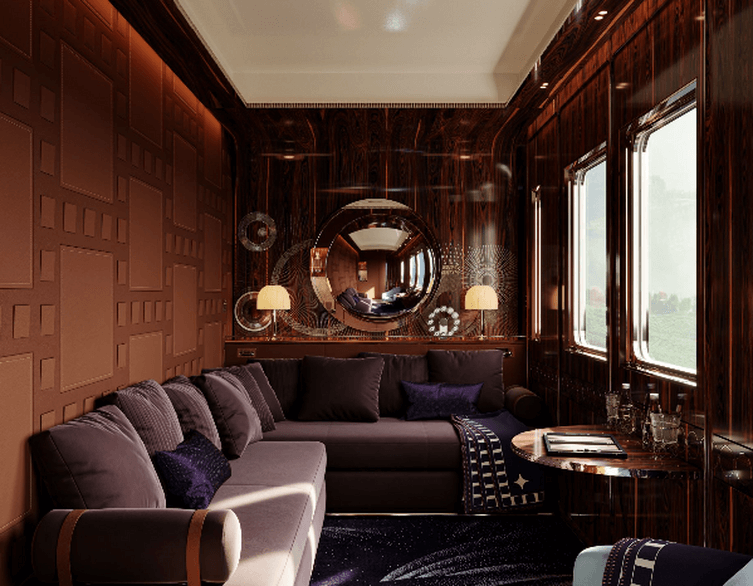
Image source: Orient Express
The Twin Classic Cabins represent the entry level of Orient Express luxury, featuring nine sleeping compartments per carriage, each equipped with two bunk beds and a washbasin decorated with period-appropriate fixtures and fittings. These cabins, while the most affordable option, still provide an authentic Orient Express experience with original marquetry panels, vintage luggage racks, and period lighting fixtures. Adjacent compartments can be opened to create larger spaces for traveling companions, making them ideal for friends or family members traveling together.
The design of the Twin Classic Cabins reflects the democratic spirit of the original Orient Express, where even the most basic accommodations provided a level of luxury and service that exceeded first-class travel on other trains of the era. The compact but efficiently designed spaces maximize comfort while maintaining the intimate atmosphere that made Orient Express travel so appealing to adventurous travelers of the 1920s and 1930s.
For those seeking enhanced luxury, the Suite category provides four suites per carriage, complete with convertible sofas that transform into beds and private bathrooms equipped with period-appropriate fixtures and modern amenities. These suites offer significantly more space than the Twin Classic Cabins, with separate seating areas during the day that convert to comfortable sleeping quarters at night. The private bathrooms feature original art deco styling with modern plumbing and amenities, providing the perfect blend of historical authenticity and contemporary comfort.
The Grand Suite option elevates the experience further with just three suites per carriage, featuring double beds, separate living areas, and private bathrooms that rival those found in the finest luxury hotels. These accommodations provide the space and privacy that appeal to discerning travelers who want to experience Orient Express luxury without compromising on comfort or convenience. The Grand Suites feature larger windows that provide better views of the passing European countryside, enhanced storage space for luggage, and more elaborate decorative elements that showcase the finest examples of 1920s luxury design.
The pinnacle of Orient Express luxury is the L’Observatoire, a revolutionary addition that occupies an entire carriage for just two passengers. This extraordinary accommodation includes a bedroom, living room, library, tea room, and a bathroom complete with a bathtub, all decorated with intricate inlays inspired by astronomical patterns designed by French artist JR. The L’Observatoire represents the ultimate in luxury rail travel, providing an experience that rivals the finest luxury suites in the world’s most exclusive hotels.
The L’Observatoire features floor-to-ceiling windows that provide panoramic views of the European countryside, a private dining area where meals can be served in complete privacy, and a library stocked with carefully selected books that reflect the intellectual atmosphere of the original Orient Express era. The astronomical theme extends throughout the carriage, with custom-designed fixtures and fittings that create a unique and memorable environment unlike anything else in luxury travel.
Dining and Entertainment Aboard the Legend
The Orient Express dining experience rivals the finest restaurants in Europe, with meals served in elegant dining cars that recreate the sophisticated atmosphere of 1920s luxury travel. The train’s chefs prepare exquisite cuisine using the finest ingredients sourced from local markets along the route, ensuring that each meal reflects the culinary traditions of the regions through which the train travels. The dining cars themselves are masterpieces of art deco design, with original marquetry panels, crystal chandeliers, and table settings that use authentic period china and silverware.
The culinary program aboard the Orient Express represents a collaboration between world-class chefs and food historians who have researched the original menus and cooking techniques used during the train’s golden age. The result is a dining experience that combines historical authenticity with contemporary culinary excellence, featuring dishes that would have been served to European royalty and international celebrities during the 1920s and 1930s.
Breakfast aboard the Orient Express is served in the privacy of passengers’ accommodations, with uniformed stewards delivering freshly prepared meals on silver service trays. The breakfast menu features both continental and English options, with fresh pastries, seasonal fruits, and premium coffee and tea selections. The intimate breakfast service allows passengers to begin their day in the comfort of their own space while enjoying views of the European countryside passing by their windows.
Lunch and dinner are served in the dining cars, where passengers dress in formal attire to maintain the elegant atmosphere of the original Orient Express era. The multi-course meals feature seasonal ingredients and regional specialties, with wine pairings selected from some of Europe’s finest vineyards. The service style reflects the formal dining customs of the 1920s, with multiple courses served at a leisurely pace that encourages conversation and social interaction among passengers.
The bar car serves as the social heart of the train, where passengers can enjoy expertly crafted cocktails, including the signature Agatha Christie cocktail, while listening to live piano music performed on an authentic 1920s piano. The atmosphere evokes the glamorous era when the Orient Express was known as the “Train of Kings, King of Trains,” carrying passengers who included everyone from European nobility to famous writers and artists. The bar car features comfortable seating arrangements that encourage mingling and conversation, creating the cosmopolitan atmosphere that made the original Orient Express famous as a meeting place for international society.

The bar on the Orient Express
Image source: Orient Express
Evening entertainment aboard the Orient Express often includes live musical performances, with professional musicians playing period-appropriate music on authentic instruments. The entertainment program varies by journey but typically includes classical music, jazz performances, and occasionally themed events that reflect the cultural heritage of the regions through which the train travels. The intimate setting of the bar car creates a unique concert hall atmosphere where passengers can enjoy world-class performances while traveling through some of Europe’s most beautiful landscapes.
The Orient Express Schedule and Budapest Connections
The Venice Simplon Orient Express operates on a carefully planned schedule that brings the train to Budapest multiple times throughout the year, with each journey timed to showcase the best of European travel during optimal weather conditions and seasonal highlights. The train typically follows two main routes that include the Hungarian capital: a Paris-Budapest-Bucharest-Istanbul route that recreates the original Orient Express journey, and a shorter Paris-Budapest-Vienna circuit that focuses on Central European destinations.
The scheduling of Orient Express services reflects careful consideration of seasonal factors, cultural events, and optimal travel conditions. Spring and autumn departures are particularly popular, as the moderate weather conditions and beautiful seasonal colors provide ideal conditions for enjoying the scenic routes through the European countryside. Summer schedules often coincide with cultural festivals and events in destination cities, while winter journeys offer a unique opportunity to experience the romance of luxury rail travel during the holiday season.
During its Budapest stops, the Orient Express usually remains at Nyugati Station for several hours, allowing passengers to explore the city or for new travelers to board this magnificent train. The extended stop provides an opportunity for passengers to experience Hungarian culture, visit local attractions, or simply enjoy the atmosphere of one of Europe’s most beautiful capital cities. The station itself, designed by the Eiffel Company and opened in 1877, provides a fittingly historic backdrop for the Orient Express experience, with its iron and glass architecture creating a perfect complement to the train’s vintage aesthetic.
The logistics of Orient Express operations in Budapest involve coordination with Hungarian railway authorities, local tourism organizations, and luxury service providers to ensure that every aspect of the passenger experience meets the highest standards. Special arrangements are made for luggage handling, ground transportation, and concierge services that allow passengers to seamlessly transition between their Orient Express journey and their exploration of Budapest.
Best deals of Budapest
Pricing and Booking Your Orient Express Adventure
The Orient Express represents the absolute pinnacle of luxury rail travel, and the pricing reflects this exclusivity as well as the extraordinary costs involved in maintaining and operating these historic carriages. Tickets for the Budapest routes start at several thousand pounds for the most basic Twin Classic Cabin, with prices increasing significantly for the more luxurious accommodations. A round-trip journey from Budapest to Paris can cost upwards of 8,550 pounds, making this truly a once-in-a-lifetime experience for most travelers.
The substantial investment reflects not just the luxury of the accommodations and service, but also the rarity of the experience and the extraordinary costs involved in maintaining these historic carriages. The Orient Express operates with limited capacity and runs only specific routes at certain times of the year, making each journey genuinely exclusive. The pricing structure also reflects the all-inclusive nature of the experience, with meals, beverages, entertainment, and service all included in the ticket price.
Booking an Orient Express journey requires advance planning, as popular routes and premium accommodations often sell out months or even years in advance. The booking process itself reflects the exclusive nature of the experience, with dedicated reservation specialists who work with passengers to customize their journey and ensure that every detail meets their expectations. Payment plans and special packages are available for certain journeys, making the experience accessible to a broader range of luxury travelers.
The pricing for Orient Express journeys varies significantly based on the route, season, accommodation category, and length of the journey. Single-night journeys are generally less expensive than multi-day adventures, while routes that include multiple countries and extended stops command premium prices. Special themed journeys, such as New Year’s Eve celebrations or cultural tours, often carry additional premiums due to their unique nature and limited availability.
The Cultural Legacy and Literary Connections
The Orient Express holds an unparalleled place in popular culture, largely thanks to Agatha Christie’s famous novel “Murder on the Orient Express,” which has introduced millions of readers worldwide to the romance and mystery of luxury rail travel. Christie herself traveled on the original Orient Express multiple times, and her experiences inspired not only her most famous detective novel but also her lifelong love of travel and adventure. The story was based on a real incident when the train became trapped in snow for eleven days near Istanbul, creating the perfect setting for Christie’s masterpiece of detective fiction.
The influence of Christie’s novel extends far beyond literature, inspiring numerous film adaptations, television productions, and theatrical presentations that have kept the Orient Express legend alive in popular culture. The 1974 film adaptation directed by Sidney Lumet and featuring an all-star cast including Albert Finney, Lauren Bacall, and Sean Connery brought the Orient Express story to a new generation of audiences, while more recent adaptations have continued to introduce new audiences to the romance and mystery of luxury rail travel.
The train’s passenger list throughout history reads like a who’s who of 20th-century culture and politics, creating a rich tapestry of stories and legends that continue to fascinate travelers and historians alike. Famous travelers included Marlene Dietrich, who was known to travel with an enormous entourage and multiple trunks of costumes; Mata Hari, the famous spy whose mysterious travels added to the Orient Express’s reputation for intrigue; Sergei Diaghilev of the Russian Ballet, who used the train to transport his company and elaborate sets across Europe; and even Lawrence of Arabia, whose presence added an element of adventure and exotic mystery to the passenger manifest.
The cultural impact of the Orient Express extends beyond individual celebrities to encompass broader themes of international diplomacy, cultural exchange, and the cosmopolitan spirit of early 20th-century Europe. The train served as a mobile embassy where representatives of different nations could meet in neutral territory, leading to informal diplomatic exchanges that sometimes had significant political consequences. The multicultural passenger lists and international crew created a unique environment where different languages, customs, and traditions blended together in ways that were rare in the more rigid social structures of the era.
Literary connections to the Orient Express extend beyond Agatha Christie to include numerous other authors who traveled on the train and incorporated their experiences into their works. Graham Greene, Ian Fleming, and Ernest Hemingway all traveled on the Orient Express and drew inspiration from their journeys for their novels and short stories. The train’s reputation as a source of literary inspiration continues today, with contemporary authors and travel writers seeking to capture the magic and mystery of Orient Express travel in their works.
The Technical Marvel Behind the Legend
The operation of the modern Venice Simplon Orient Express represents a remarkable achievement in heritage railway preservation and luxury hospitality management. Each of the 17 carriages requires constant maintenance and care to preserve their authentic 1920s and 1930s character while meeting modern safety and comfort standards. The technical challenges involved in operating these historic carriages across multiple European countries with different railway systems, electrical standards, and safety regulations require extraordinary expertise and coordination.
The restoration and maintenance of Orient Express carriages involves specialized craftsmen who possess skills that are increasingly rare in the modern world. Traditional marquetry work, hand-embroidered fabrics, brass polishing techniques, and period-appropriate upholstery methods all require artisans who have spent years mastering techniques that were common in the 1920s but are now considered specialized crafts. The ongoing preservation of these skills represents an important contribution to European cultural heritage beyond the immediate context of luxury travel.
The logistical complexity of Orient Express operations extends to every aspect of the service, from sourcing period-appropriate ingredients for the dining cars to training staff in the formal service styles of the 1920s. The train’s crew includes not only traditional railway personnel but also hospitality professionals who specialize in luxury service, cultural historians who can share the stories and legends of the Orient Express with passengers, and even musicians who perform on authentic period instruments.
The mechanical systems of the Orient Express carriages represent a fascinating blend of historical authenticity and modern safety technology. While the external appearance and interior design remain faithful to the 1920s originals, hidden modern systems ensure passenger safety and comfort. Updated electrical systems, modern braking technology, and contemporary communication equipment are seamlessly integrated into the historic carriages without compromising their authentic appearance.
The Future of Orient Express
The Orient Express story continues to evolve, with exciting developments planned for the coming years that will expand the reach and influence of this legendary brand while maintaining its commitment to luxury and authenticity. In 2026, a new Orient Express service will launch on the original Paris-Istanbul route, featuring 17 original Orient Express cars from the 1920s and 1930s with exceptional art deco décor. This new service, designed by renowned architect Maxime d’Angeac, will offer contemporary luxury while maintaining the authentic spirit of the original, representing the most ambitious expansion of the Orient Express brand in decades.
The new Paris-Istanbul service will recreate the original Orient Express route in its entirety, providing passengers with the opportunity to experience the complete journey that made the train famous. The route will include extended stops in major cities along the way, allowing passengers to explore the cultural and historical attractions of each destination while maintaining the continuity of the luxury rail experience. This expansion represents a significant investment in the future of luxury rail travel and demonstrates the continuing appeal of the Orient Express concept to contemporary travelers.
Additionally, the Orient Express La Dolce Vita has been introduced, focusing on Italian routes and featuring design inspired by 1960s and 1970s Italian style. This expansion of the Orient Express brand ensures that the legend will continue to captivate new generations of luxury travelers while exploring new destinations and cultural themes. The Italian service represents a departure from the traditional Orient Express aesthetic while maintaining the core values of luxury, service, and cultural immersion that define the brand.
Future developments in Orient Express services may include new routes to previously unexplored destinations, partnerships with luxury hotels and cultural institutions, and innovative approaches to combining rail travel with other luxury experiences. The brand’s commitment to preserving railway heritage while adapting to contemporary travel preferences ensures that the Orient Express will remain relevant and appealing to future generations of luxury travelers.
The expansion of Orient Express services also reflects broader trends in luxury travel toward experiential and sustainable tourism. Rail travel offers an environmentally conscious alternative to air travel for certain routes, while the immersive nature of the Orient Express experience appeals to travelers seeking authentic cultural encounters rather than superficial tourist experiences. These trends suggest that the Orient Express concept will continue to evolve and expand in response to changing traveler preferences and global concerns about sustainable tourism.
Planning Your Orient Express Experience from Budapest
For travelers considering an Orient Express journey that includes Budapest, advance planning is essential due to the limited capacity and exclusive nature of the service, as well as the complex logistics involved in coordinating luxury rail travel with other aspects of a European vacation. The train operates on specific dates throughout the year, and popular routes often sell out well in advance, making early booking crucial for securing preferred accommodations and travel dates.
Budapest serves as an ideal starting or ending point for an Orient Express adventure, as the city offers world-class hotels, restaurants, and attractions that complement the luxury rail experience perfectly. The Hungarian capital’s rich history, stunning architecture, and vibrant cultural scene provide the perfect backdrop for the beginning or conclusion of an Orient Express journey. Visitors can explore Budapest’s famous thermal baths, which offer a unique relaxation experience that complements the luxury of Orient Express travel, or visit the historic Castle District with its medieval streets and panoramic views of the Danube River.
The timing of an Orient Express journey from Budapest can be coordinated with seasonal events and cultural attractions in the city. Spring visits coincide with the blooming of Budapest’s many parks and gardens, while autumn offers the spectacular colors of the Hungarian countryside. Winter visits provide the opportunity to experience Budapest’s famous Christmas markets and thermal baths during the cold season, while summer offers long days and warm weather ideal for exploring the city’s outdoor attractions and riverside promenades.
Luxury accommodations in Budapest that complement the Orient Express experience include historic hotels that maintain the same standards of service and elegance as the train itself. The Four Seasons Hotel Gresham Palace, located in a beautifully restored art nouveau building overlooking the Danube, provides the perfect transition between Orient Express luxury and Budapest exploration. The Aria Hotel, with its music-themed décor and rooftop terrace, offers a unique cultural experience that reflects Budapest’s rich musical heritage.
Cultural attractions in Budapest that particularly appeal to Orient Express travelers include the Hungarian State Opera House, which offers world-class performances in one of Europe’s most beautiful opera houses, and the Museum of Fine Arts, which houses an exceptional collection of European art from the periods when the Orient Express was in its golden age. The Hungarian Parliament Building, with its neo-Gothic architecture and guided tours that reveal the country’s fascinating political history, provides insight into the historical context that made the Orient Express possible.
Culinary experiences in Budapest complement the gourmet dining aboard the Orient Express, with the city’s restaurants offering everything from traditional Hungarian cuisine to contemporary international fare. The famous Central Market Hall provides an authentic taste of Hungarian food culture, while Michelin-starred restaurants offer sophisticated dining experiences that match the culinary standards of the Orient Express. Wine enthusiasts can explore Hungary’s excellent wine regions through tastings and tours that showcase the country’s viticultural heritage.
The Ultimate Luxury Travel Experience
The combination of Budapest’s rich history and the Orient Express’s legendary luxury creates an unmatched travel experience that transcends ordinary tourism to become a transformative journey through European culture and history. Whether arriving in Budapest aboard this magnificent train or departing for destinations across Europe, the Orient Express offers a journey that transcends mere transportation to become a truly transformative travel experience that creates memories and stories that last a lifetime.
The Orient Express in Budapest represents more than just luxury travel; it embodies the romance of a bygone era when the journey itself was as important as the destination, when travel was an adventure rather than simply a means of getting from one place to another. For discerning travelers seeking an experience that combines historical significance, unparalleled luxury, and the thrill of traveling aboard one of the world’s most famous trains, the Orient Express offers an adventure that satisfies the deepest desires for authentic luxury and cultural immersion.
The experience of traveling on the Orient Express creates a unique perspective on European history and culture, allowing passengers to see the continent from the same vantage point as the royalty, celebrities, and adventurers who made the train famous during its golden age. The slow pace of rail travel provides time for reflection and appreciation of the landscapes, cities, and cultures that pass by the windows, creating a meditative quality that is impossible to achieve with faster forms of transportation.
The social aspect of Orient Express travel adds another dimension to the experience, as passengers from around the world come together in the intimate setting of the train’s public spaces. The formal dining arrangements, cocktail hours in the bar car, and shared experiences of luxury travel create opportunities for meaningful connections and friendships that often extend far beyond the duration of the journey itself. Many Orient Express passengers report that the relationships formed during their journey become as memorable as the travel experience itself.
For those fortunate enough to experience the Orient Express in Budapest, the journey represents the fulfillment of a dream that connects them to over 140 years of luxury travel history while providing access to contemporary amenities and service standards that exceed even the most demanding expectations. The Orient Express continues to set the standard for luxury rail travel worldwide, ensuring that this legendary train will continue to capture imaginations and create extraordinary travel experiences for generations to come.





